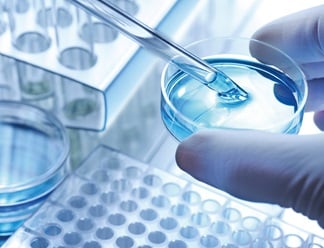HARTMANN SCIENCE CENTER

According to the World Health Organisation (WHO), COVID-19 (Coronavirus Disease 2019) is the name given to the clinical picture caused by the novel coronavirus SARS-CoV-2.
The most common symptoms associated with COVID-19 in Germany include:
Some 14 % of patients also describe a disturbed sense of smell and/or taste.
Further symptoms can include:
3 % of those affected develop pneumonia (inflammation of the lungs).
The course of COVID-19 disease varies according to the multitude of possible symptoms; severe courses are rare, but can also occur in persons with no known underlying disease as well as in younger people.
In Germany, COVID-19 infections must be reported and about one in five reported patients (approx. 17 %) are hospitalised. The case-death rate (fatality rate) can be calculated from the number of reported cases. This is about 4.7 % in Germany. The fatality rate across Europe is approx. 10.5 %.
Reliable statements on the long-term consequences and further disease manifestations are not yet possible: for example, neurological disorders (including encephalopathy, meningitis, Guillain-Barré syndrome) as well as dermatological manifestations (including itching, rashes, redness, skin blisters, frostbite-like skin lesions) and also cardiovascular complications or kidney disease have been described in connection with COVID-19.
Based on the current data, it is not possible to make any reliable statements about the duration of the infection of the infected persons. The infectious period most likely already starts two days before the first symptoms appear (highest infectivity probably on the day before the symptoms begin).
In everyday situations, the virus is mainly transmitted via droplets that are produced when coughing, sneezing and speaking and can be transferred to other persons via their mucous membranes of the nose, mouth and possibly the eyes. This transmission path is referred to as droplet infection.
Transmission via aerosols (very small droplets of less than 5 µM) is possible, especially in everyday situations. However, from a medical perspective, all aerosol-producing processes must be regarded as being high-risk. However, blood, faeces, urine and other body fluids are not considered to be infectious in COVID-19 patients. Transmission through contaminated surfaces (contact transmission) is also likely, particularly in the immediate vicinity of infected persons.
An approved antiviral therapy against SARS-CoV-2 is not yet available. However, initial study results indicate possible drug candidates which can alleviate the course of the disease, especially in severe cases. The treatment of COVID-19 patients depends on the severity of the disease and consists primarily of supportive measures. A vaccine to protect against COVID-19 is not available. The rigorous implementation of basic hygiene and personnel protection measures is therefore of great importance. Many infected persons develop specific antibodies after experiencing a SARS-CoV-2 infection, but due to the lack of long-term studies, it is unclear how robust and permanent this immune status is.
References:
1 Robert Koch Institute. COVID-19 (Coronavirus SARS-CoV-2). Accessed on 10.07.2020
2 Robert Koch Institute. Information on detection, diagnostics and treatment of patients with COVID-19. Accessed on 10.07.2020